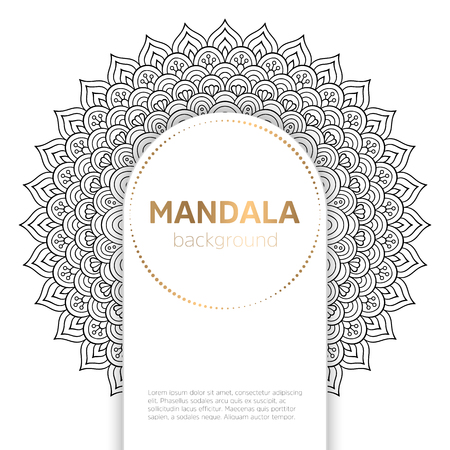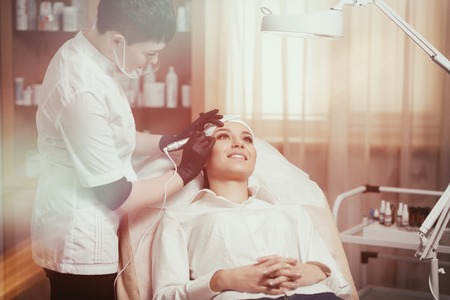Introduction to Henna and Gajra: Symbols of Indian Heritage
India’s vibrant culture is beautifully reflected through its traditional adornments, with henna (commonly known as mehendi) and gajra (fresh flower garlands) standing out as iconic elements that have gracefully transcended generations. Both henna and gajra hold deep-rooted significance in Indian customs, symbolizing not only beauty but also blessings, prosperity, and auspiciousness. Henna has been used for centuries in various ceremonies—from weddings to festivals—where intricate designs are carefully applied on hands and feet, marking joyful occasions and expressing creativity. Similarly, gajras, made from fragrant flowers like jasmine or mogra, are often woven into braids or buns, enhancing the natural allure of hair while filling the air with a sweet aroma. These adornments serve as powerful representations of femininity, grace, and the celebration of life. Over time, while modern trends have influenced personal styling choices, henna and gajra continue to be cherished by women across India—not just as a nod to tradition but also as versatile fashion statements. Today, they are frequently seen blending seamlessly with contemporary hairstyles at weddings, festive events, and even in everyday looks, highlighting their enduring appeal in the evolving landscape of Indian hairstyling.
Evolution in Hairstyling: From Classical Roots to Contemporary Trends
India’s love affair with henna (mehendi) and gajra (fragrant flower garlands) has a rich legacy, deeply rooted in centuries-old customs. Traditionally, henna was used as an auspicious adornment for brides and festive occasions, while gajra symbolised femininity and freshness, often gracing the hair of women during temple visits, family gatherings, and classical dance performances. These timeless elements have not only survived generations but have also evolved to fit the dynamic tastes of modern Indian youth. Let’s trace this fascinating journey:
Era |
Henna Usage |
Gajra Styling |
|---|---|---|
Classical Period |
Symbolic of marital bliss and prosperity; intricate designs on hands and feet for rituals. | Jasmine or mogra gajras worn as hair buns or braids by women during religious events. |
Mid-20th Century |
Became part of everyday beauty regimens; simpler patterns for casual wear. | Gajra styling popularised in Bollywood movies, paired with sarees or lehengas at weddings. |
Modern Day |
Fusion designs blending Arabic motifs and geometric styles; sported at parties, music festivals, and pre-wedding shoots. | Gajras now styled with open hair, ponytails, or even fusion outfits like Indo-western gowns. |
This adaptability showcases the enduring popularity of henna and gajra across generations in India. Youngsters today experiment by blending these traditional adornments with contemporary looks—think boho-chic hairstyles highlighted by fresh mogra strands or minimalistic mehendi art paired with western outfits. Yet, the essence remains unchanged: both henna and gajra continue to be symbols of celebration, beauty, and cultural pride in every Indian household.

3. Blending Tradition with Modernity: Fusion Hairstyles
In today’s vibrant Indian fashion scene, the fusion of traditional and modern elements is taking centre stage, especially when it comes to hairstyling. Brides, celebrities, and social media influencers are setting new trends by creatively blending age-old traditions like henna (mehendi) patterns and floral gajra with stylish, contemporary hairdos. This trend not only preserves our rich heritage but also gives it a chic twist that resonates with young India.
Creative Bridal Looks: The Best of Both Worlds
Indian brides are redefining wedding looks by pairing classic gajra strands with modern updos or loose curls. For example, a messy bun adorned with jasmine gajra instantly adds a touch of tradition while keeping the overall look trendy and fresh. Some brides opt for intricate mehendi-inspired hair tattoos or stencils, which mimic henna designs on the scalp or nape, perfectly matching their bridal mehendi and lehenga.
Celebrities & Influencers: Trendsetters in Fusion Styling
Bollywood stars like Deepika Padukone and Alia Bhatt have often been spotted at weddings and festive events flaunting hairstyles that blend traditional gajras with sleek ponytails or boho waves. Influencers on Instagram and YouTube are popularising this look by offering tutorials that show how to weave marigold or mogra gajras into braids or half-up styles, making these classic accessories suitable for both ethnic and Indo-western outfits.
Making Tradition Fashionable for Every Occasion
This trend isn’t limited to grand celebrations alone. Young women across India are embracing fusion hairstyles for festivals like Diwali, Holi, and Raksha Bandhan as well as casual gatherings. By mixing henna-inspired hair art with trendy fishtail braids or adding small gajra clusters to side-swept buns, they’re proving that tradition can be effortlessly fashionable. With so many creative options, fusion hairstyling allows everyone to express their personal style while staying connected to their roots.
4. Cultural Resonance and Everyday Appeal
Henna (mehendi) and gajra (fresh jasmine flower garlands) are not just reserved for grand occasions like weddings or major festivals in India. Their timeless charm extends seamlessly into everyday life, resonating deeply across diverse cultural contexts. Both South Indian and North Indian communities have their unique ways of celebrating these accessories, infusing daily routines with tradition and elegance.
Everyday Usage in South India and North India
| Region | Common Occasions | Popular Styles |
|---|---|---|
| South India | Temple visits, poojas, workdays | Simple gajra braids, single-strand jasmine around buns |
| North India | Family gatherings, casual outings, school events | Minimal henna designs on hands, subtle floral clips |
Cultural Significance Beyond Celebrations
The application of henna and adorning of gajra reflect a respect for heritage and a love for beauty in the mundane. For example, it is common to see women in cities like Chennai or Bengaluru wearing fresh jasmine in their hair as they commute to work. In North Indian towns, college students might sport delicate henna patterns even on regular days, making tradition a part of daily self-expression.
Bridging Generations Through Everyday Practice
This everyday appeal helps bridge generations—grandmothers passing down the art of tying gajra or drawing mehendi to daughters and granddaughters. These practices foster family bonds and keep cultural narratives alive amid modern lifestyles.
Ultimately, the everyday embrace of henna and gajra highlights their enduring relevance. Whether worn for spirituality, aesthetics, or personal identity, these accessories remain essential threads woven through the fabric of Indian daily life.
5. Henna & Gajra in Pop Culture and Social Media
Bollywoods Glamorous Revival
Bollywood has always been a trendsetter in Indian fashion, and the recent surge in the use of henna (mehendi) and gajra (fresh flower garlands) in hairstyling is no exception. From blockbuster movies to celebrity weddings, leading actresses like Deepika Padukone and Alia Bhatt have flaunted intricate mehendi designs and gajra-adorned buns, sparking a renewed interest among fans. These visual cues from Bollywood not only celebrate Indias rich heritage but also make these traditional elements aspirational for the younger generation.
The Instagram Influence
Instagram reels and influencer posts have played a pivotal role in popularising henna and gajra beyond festival occasions. Influencers are blending contemporary fashion with classic elements, showcasing looks where minimalistic mehendi patterns meet boho-chic hairstyles accented by delicate jasmine gajras. Hashtags like #ModernMehendi, #FloralHairstyle, and #DesiVibes are trending among Indian youth, reflecting a shift towards celebrating cultural roots while experimenting with modern aesthetics.
Style Icons Leading the Change
Contemporary style icons such as Sonam Kapoor and Masoom Minawala are often seen sporting fusion looks that seamlessly incorporate traditional accessories into their everyday style. Whether it’s pairing a denim jacket with a braid wrapped in gajra or subtle henna patterns on hands for a brunch look, these icons influence millions of followers to embrace their ethnic identity with pride. Their creative interpretations are making henna and gajra relevant for everything from college fests to destination weddings.
Youth Fashion Aspirations Redefined
The combined impact of Bollywood glamour and social media trends has made henna and gajra essential components of youthful self-expression. Young Indians are now more open to reimagining these age-old adornments in ways that reflect both tradition and individuality. This blend of heritage with personal style not only preserves cultural practices but also ensures their evolution in the ever-changing world of fashion.
6. Maintaining Authenticity with a Modern Twist
As the fusion of tradition and modernity continues to inspire hairstyling trends in India, it becomes essential to respect and uphold cultural roots even while embracing contemporary fashion. Henna and gajra have long symbolised festivity, purity, and heritage. While experimenting with new-age styling techniques—such as intricate henna patterns combined with western hairdos or using gajra in boho braids—one must be mindful of the significance these elements hold in Indian culture.
Respecting Cultural Roots
When incorporating henna (mehendi) and gajra into your hair looks, always take time to understand their traditional importance. Henna is more than a decorative art; it signifies auspiciousness and celebration during weddings, festivals like Karva Chauth, Diwali, or Eid. Gajra, usually made from jasmine or mogra flowers, represents freshness, femininity, and is often worn during spiritual events. By acknowledging these meanings, you honour age-old customs even as you adapt them to contemporary styles.
Choosing Authentic, Locally-Sourced Products
To maintain authenticity, opt for natural henna powder sourced from reputed local brands or artisans. Avoid chemical-laden cones that can harm your skin and dilute the cultural value of mehendi. For gajra, choose fresh flowers from neighbourhood florists or trusted market vendors rather than artificial alternatives. Supporting local flower sellers not only ensures quality but also empowers traditional livelihoods.
Tips for Blending Old & New
- Combine classic mehendi designs with geometric or minimalistic motifs for a chic look.
- Intertwine fresh gajra into buns or fishtail braids for festive yet trendy hairstyles.
- Use regional varieties of henna and flowers to celebrate the diversity within Indian traditions.
- Share stories behind your styling choices on social media to spread awareness about their cultural relevance.
By thoughtfully blending the old with the new—and choosing authentic, locally-sourced henna and gajra—you can create stunning hair statements that are both stylish and respectful of India’s rich heritage. This approach not only keeps traditions alive but also adds meaning and depth to every modern twist you add to your look.


